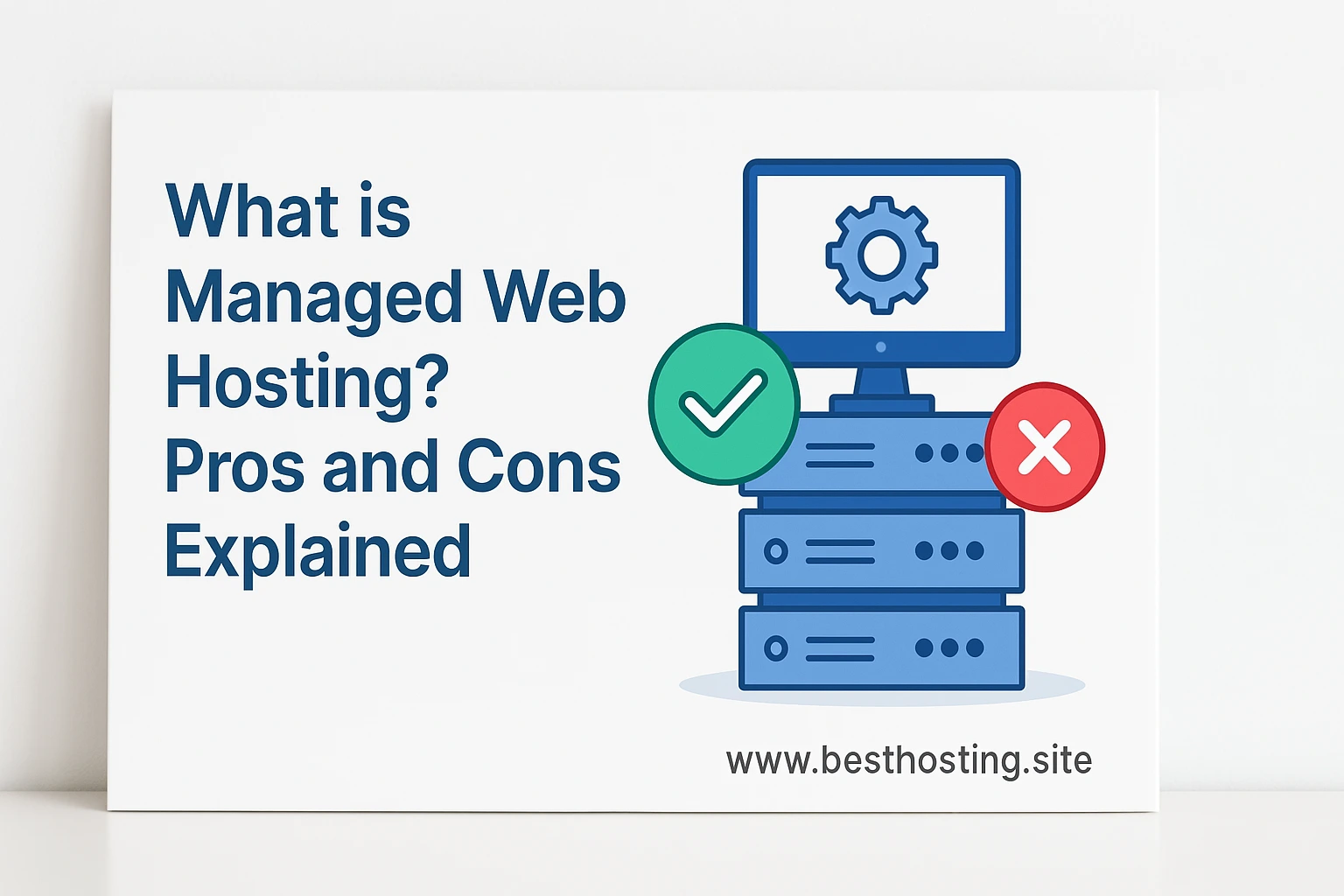Managed web hosting is a service where the hosting provider takes care of all the technical aspects of running a website, from server setup and maintenance to security and performance optimization. This article explains what managed hosting is, its benefits, who should consider it, and the pros and cons to help you decide if it’s the right choice for your website or business.

What is Managed Web Hosting?
Managed web hosting means leasing a server from a provider who handles everything related to server management. This includes setup, software updates, security patches, backups, monitoring, and technical support. Unlike unmanaged hosting, where you manage all these tasks yourself, managed hosting allows you to focus on your website or business without worrying about the backend technical details.
Providers often offer managed hosting tailored to specific platforms like WordPress or e-commerce, ensuring optimized performance and security for those environments.

Who Should Consider Managed Hosting?
- Businesses without in-house IT expertise: If you lack technical staff to manage servers and security, managed hosting provides peace of mind.
- Growing websites: Managed hosting scales easily with your traffic and business needs, adapting resources quickly.
- Busy website owners: Focus on content and customers while experts handle server maintenance and troubleshooting.
- Sites requiring high security and uptime: Managed hosting providers implement advanced security measures and constant monitoring.
Step-by-Step Guide to Managed Hosting
- Choose a Managed Hosting Provider: Select a provider that fits your platform and budget. Examples include Hostinger, Kinsta, and WP Engine.
- Sign Up and Select a Plan: Pick a plan based on your expected traffic, storage needs, and technical requirements.
- Server Setup and Configuration: The provider installs and configures the server environment tailored to your website.
- Migration (if applicable): Providers often assist in migrating your existing website to their servers.
- Ongoing Maintenance: Your provider handles updates, security patches, backups, and performance monitoring.
- Access Support: Use 24/7 technical support for troubleshooting and advice.

Tools and Resources Needed
- A reliable managed hosting provider (e.g., DreamHost, Rose Hosting).
- Website platform or CMS (WordPress, Magento, etc.).
- FTP or control panel access for managing files and settings.
- Backup and security tools (usually included by provider).
Common Mistakes & How to Avoid Them
- Choosing unmanaged hosting by mistake: If you lack technical skills, unmanaged hosting can lead to security risks and downtime.
- Ignoring scalability needs: Select a provider that can easily upgrade your resources as your site grows.
- Not verifying support quality: Ensure 24/7 expert support is available and responsive.
- Overlooking security features: Confirm your provider offers firewalls, malware scanning, and automatic updates.

Additional Tips & Best Practices
- Regularly communicate with your hosting provider to align on growth plans and technical needs.
- Use staging environments provided by managed hosts to test updates safely.
- Keep backups even if your provider offers automated ones, for extra safety.
- Review plugin or software restrictions your managed host may impose, especially for WordPress.
Frequently Asked Questions
- What is the main difference between managed and unmanaged hosting?
- Managed hosting includes full server management by the provider, while unmanaged hosting requires you to handle all technical tasks yourself.
- Is managed hosting more expensive?
- Yes, managed hosting typically costs more than shared or unmanaged hosting but offers better performance, security, and support.
- Can I scale my resources with managed hosting?
- Most managed hosting providers offer easy scalability to adjust resources as your website traffic grows.
- Do managed hosting providers offer security features?
- Yes, they provide firewalls, malware scanning, automatic updates, DDoS protection, and backups to secure your site.
- Is managed hosting suitable for small websites?
- It can be, especially if you want hassle-free management and better security, but it might be overkill for very simple or low-traffic sites.
Pros and Cons of Managed Web Hosting
| Pros | Cons |
|---|---|
| Expert technical support 24/7 | Higher cost compared to unmanaged or shared hosting |
| Automatic updates, backups, and security management | Less control over server configurations |
| Better performance and uptime | Possible restrictions on plugins or software |
| Scalable resources to grow with your business | May not be necessary for very small or simple sites |
Summary & Conclusion
Managed web hosting is an excellent choice for businesses and website owners who want reliable, secure, and hassle-free hosting without needing deep technical expertise. It offers benefits like automatic maintenance, expert support, scalability, and enhanced security. However, it comes at a higher cost and with some limitations on control. If you value convenience and uptime and want to focus on your core business, managed hosting is a smart investment.
For those interested in exploring managed hosting options, consider providers like Hostinger, Kinsta, WP Engine, or DreamHost.



